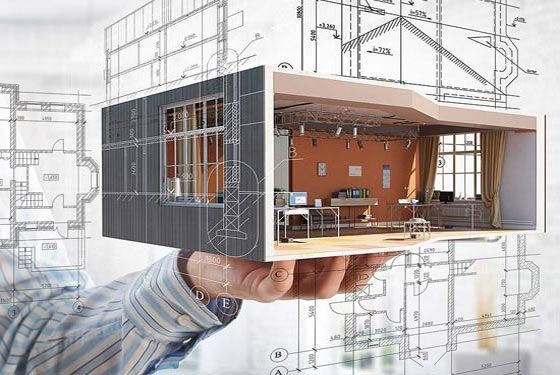
Do you know the difference between Revit and traditional CAD software? BIM (Building Information Modeling) is quickly becoming the industry standard for architectural design and construction projects. With its improved collaboration, accuracy, and efficiency, it’s easy to see why BIM is revolutionizing the industry.
In this blog post, we’ll dive into the comparison between Revit and traditional CAD software and explore the many benefits of embracing BIM for your next project. From improved communication between teams to enhanced accuracy, find out why Revit is the future of architectural design.
Understanding the Differences Between Revit and Traditional CAD
When it comes to architectural design and construction projects, understanding the differences between Revit and traditional CAD software is crucial. While both tools have their merits, BIM (Building Information Modeling) is quickly emerging as the industry standard.
Traditionally, CAD software was used to create 2D drawings, allowing architects and engineers to visualize the layout and dimensions of a building. However, Revit takes this a step further by incorporating a 3D modeling approach. With Revit, you can create a digital representation of the entire building, complete with walls, windows, doors, and even furniture.
This level of detail not only helps with visualization but also enables better coordination between different project stakeholders.
Another key difference between Revit and traditional CAD software is the collaborative aspect. In the past, project teams had to work on separate CAD files, leading to potential errors and miscommunication. With Revit, all team members can work on the same model simultaneously, making it easier to track changes and ensure everyone is on the same page.
Additionally, Revit offers parametric modeling, which means that any changes made to the model will automatically update all related components. This level of automation saves time and minimizes errors, making Revit a more efficient choice for architectural design projects.
Overall, understanding the differences between Revit and traditional CAD software is essential for architects, engineers, and other construction professionals. By embracing BIM and utilizing Revit, teams can benefit from enhanced collaboration, accuracy, and efficiency, ultimately leading to better-designed buildings and improved project outcomes.
Benefits of Embracing BIM for Architectural Design Projects
BIM (Building Information Modeling) is not just a software tool; it is a process that uses computer software to create a virtual construction project model. Embracing BIM can bring a multitude of benefits to architectural design projects, revolutionizing the way we design and construct buildings. Here are some key benefits of embracing BIM:
Enhanced Visualization
Enhanced visualization is one of the key benefits of embracing BIM (Building Information Modeling) for architectural design projects. With software programs like Archicad, Tekla, and Revit, BIM allows architects and designers to bring their projects to life in three dimensions.
This means that instead of relying on 2D drawings, they can create a virtual model of the building, complete with walls, windows, doors, and even furniture.
The ability to visualize the building in 3D provides a more realistic representation, making it easier to make design decisions and identify potential problems early in the process. This is particularly beneficial when it comes to coordination between different trade activities.
BIM helps reduce the chances of errors and conflicts by highlighting clashes between different building components. For example, it can detect if a pipe is running through a wall or if a door swing interferes with another element.
Furthermore, BIM enables 4D simulations, which add the dimension of time to the virtual model. This allows construction professionals to visualize the construction process and identify any potential logistical issues. By having this enhanced visualization, teams can make informed decisions, avoid costly mistakes, and ensure that the final building is as accurate as possible.
Increased Collaboration
One of the most significant benefits of embracing BIM (Building Information Modeling) for architectural design projects is the increased collaboration it enables. BIM has revolutionized the way architects, engineers, and contractors work together, creating a more streamlined and efficient process.
With BIM, construction managers can easily visualize the project in 3D, allowing them to identify potential problems or clashes between different building components. This early detection of conflicts helps reduce costly errors and delays during the construction phase.
Moreover, BIM can create virtual reality simulations that allow stakeholders to experience the construction site before any work begins. This immersive experience helps to ensure that everyone involved understands the project scope and can make informed decisions.
Additionally, BIM has improved collaboration by bringing architects, engineers, and contractors closer together. With all team members working on the same model, communication and coordination are significantly improved. This leads to fewer misunderstandings and conflicts, resulting in smoother project execution.
Furthermore, BIM has made it possible to automate repetitive tasks, such as generating accurate cost estimates based on the virtual model. This automation not only saves time but also ensures more accurate budgeting and cost control.
Finally, BIM is transforming the construction industry by promoting off-site prefabrication. With the detailed virtual model, architects and contractors can coordinate the fabrication and assembly of building components in advance, leading to faster and more efficient construction processes.
Overall, the increased collaboration facilitated by BIM is revolutionizing the architectural design and construction industries. By embracing BIM, project teams can work together more effectively, resulting in better-designed buildings and improved project outcomes.
Cost Estimates and Quality Control
One of the major benefits of embracing BIM (Building Information Modeling) for architectural design projects is the ability to generate accurate cost estimates and maintain better quality control.
This level of visualization and control leads to more accurate cost estimates and ensures better quality control throughout the construction process. With the help of construction management software that utilizes BIM, the construction process can be streamlined, saving time and minimizing errors.
BIM is an essential tool for the construction industry, and its popularity will continue to grow as more professionals recognize its benefits.
Increased ROI
When it comes to architectural design projects, embracing BIM (Building Information Modeling) can result in increased return on investment (ROI). BIM allows for accurate cost estimates and schedules, ensuring that projects are completed on time and within budget.
By incorporating BIM, the chances of errors and conflicts are reduced as potential clashes between different trade activities are identified early on. This minimizes costly mistakes and rework, ultimately saving time and money.
While there is an initial cost associated with implementing BIM, companies can quickly recover this investment through increased efficiency and productivity. The benefits of embracing BIM far outweigh the upfront expenses, making it a worthwhile investment for architectural design projects.
RW2 Offers Revit for BIM Classes
Revit and BIM have become indispensable tools for architectural design and construction projects. If you’re interested in mastering Revit and leveraging the power of BIM, look no further than RW2.
At RW2, we offer comprehensive Revit classes that focus on architectural planning and design in line with Building Information Modeling (BIM) techniques. Our classes cover fundamental design methods and practices for creating accurate and detailed architectural drawings.
In our Revit classes, you’ll learn everything you need to know about creating floor plans, elevations, and sections of building projects. We’ll teach you how to develop 3D models and utilize scope boxes to manage and control the visibility and organization of your architectural elements.
But that’s not all—our industry-experienced instructors will guide you through the advanced features and functionalities of Revit, enabling you to take your architectural designs to the next level. You’ll learn how to create custom families, collaborate with project teams, and optimize your workflow for maximum efficiency.
Whether you’re a newbie or a seasoned pro, our Revit classes will help you improve your skills and give you new opportunities in the architectural field.
Just add information and link to tuition and fees page of website about checking out scholarships for residents of Cass, Clay, Jackson, Johnson, Platte, and Wyandotte counties and grants for residents across the state of Missouri. Join RW2 today and embark on your journey toward becoming a Revit expert.



